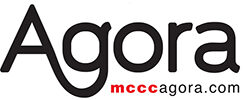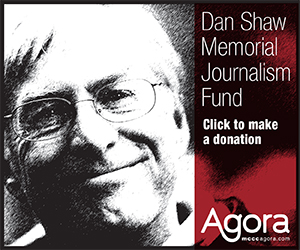From heart-wrenching tours of Holocaust internment camps to fiery Czech soccer games, the 2011 Study Abroad trip was an eventful learning experience for all who attended.
Dr. Joanna Sabo, professor of political science, led students and faculty on the Central Europe trip.
Vote on where the next Study Abroad trip should go
The group from MCCC made stops in Vienna, Austria; Budapest, Hungary; Krakow, Poland; and Prague, Czech Republic.
Students could take either or both of two classes while on the trip: POLSC 211 – Introduction to Comparative Politics, which Sabo taught, and ART 155 – Art Appreciation, taught by art professor Gary Wilson.
Regular class meetings were held, and students were expected to complete projects and assignments like any other class. Each student was required to keep a comprehensive photo journal.
Sabo was pleased with how students performed in the classes.
“This was such an amazing group of students,” she said. “They approached it like a study trip.”
Collin Keehn, a political science major, was particularly pleased with the class taught by Sabo.
“The classes were great. Comparative Politics was right in my field of study, so naturally, I loved it. But Art was a class out of the ordinary for me; I really liked it.”
Dennis Polzcynski, another student who went on the trip, was more partial to Wilson’s art class.
“Gary Wilson really knows his art,” Polczynski said. “His class gave me a better understanding of what I was looking at.”
MCCC students departed from Monroe on May 10, arriving at their first stop, Vienna, Austria, on May 11. They spent three days there.
“I felt architecture was the most interesting thing about Vienna. All the buildings are absolutely breath-taking,” Keehn said.
“The city was so clean, and looked very nice,” Polczynksi said.
From Austria, the group headed to Budapest, Hungary.
“Our tour guide claimed that the Hungarian people are very unique and unlike anyone else we would see on our trip; he was spot on with that claim,” Keehn said.
While in Budapest, a group of students and faculty visited the Szécheny baths, which are heated through thermal ducts close to the Earth’s surface.
“It was interesting to be at these baths, to know that they’ve been here for so long and have such a long history,” Polczynski said.
The group then travelled to Krakow, Poland, where they also spent three days.
“Everything about Krakow was beautiful. The buildings, the landscape, and the art were all amazing,” Keehn said.
While in Krakow, students took a side trip to the Auschwitz-Birkenau concentration camp. According to Sabo, it was an emotional experience for everyone involved.
“The Holocaust Museum at Auschwitz was far more graphic than any Holocaust museum in the US. Students were breaking down, crying.”
Keehn shares similar sentiments, claiming that the trip was life-changing.
“I can say with certainty that it was the saddest day of my life,” he said.
During the ride from Krakow to the concentration camp, Keehn tried to prepare himself for what he was about to experience, but found that it was in vain.
“The concentration camps are a long hour and a half bus ride away, and on the way there you try to ready yourself for what you are going to see, but there is nothing anyone can do to make what you see any easier,” he said.
“Students learn about the Holocaust all throughout school but nothing can prepare you for what you see when you arrive there.”
Hearing stories about what went on at Auschwitz while taking the tour had the greatest impact on Keehn.
“When you go through each building, you see so many little stories from what went on during that time. A person can’t help but get emotional when they go to that place, I know every person I saw there had tears in their eyes,” he said.
Polzcynski had a deeper connection to what he witnessed at the museum.
“I have always been a student of the Holocaust,” he said. “The trip yeally showed the atrocities.”
Polzcynski, who is a Jehovah’s Witness, felt a connection to the camp, considering how followers of the Jehovah’s Witness religion were treated during the Holocaust.
“Many of Jehovah’s Witnesses were intermed [sic] in the camps. Many were shot to death,” Polzcynski said. “They would not sign their allegiance to the government.”
Those who identified themselves as a Jehovah’s Witness were forced to wear a purple triangle, which indicated their religion, according to Polzcynski. During the group’s visit to Krakow, Polzcynski wore one too.
“I wore this in remembrance of those who lost their lives,” he said.
Also, while in Krakow, the group visited a model Communist city, Nowa Huta, which was constructed to deliver a positive view of communism.
Dr. Sabo felt that the tour guides did an amazing job with the students, and offered them more than any American could. .
“It covered so much. They taught the students with humor. It was almost directly out of the textbook,” she said.
“They (the tour guides) came back with a different definition of socialism than any other American, because they lived with socialism and communism.”
The group’s final destination was Prague, Czech Republic. They stayed in Prague for 11 days, to have a more in-depth experience within a culture.
“The city itself is busy and crowded more so than any other we went to. But the people of Prague were the most gracious and friendly. Everyone were I went I would learn a new world in the Czech language because the locals would help me,” Keehn said.
While in Prague, the group visited several historic sites, including the Prague Zoo and the Czech Republic’s Parliament building. While at the Parliament building, students participated in a scavenger hunt. Dr. Sabo was impressed with the building itself.
“Owls, loose peacocks were running around the grounds. The gardens were beautiful,” she said.
Keehn enjoyed witnessing firsthand the differences between the systems of government.
“Seeing the different types of governments was very interesting. It was really unique learning about the forms of governments while you’re standing inside of their country’s parliament building.”
The group also experienced a Czech soccer game. Reactions to the experience were generally positive.
“I would have to say one of the funniest parts of the trip, outside of meeting many new people, was going to a Czech league soccer match for the Club Bohemians 1905,” Keehn said.
“The team would score a goal and would set a bench on fire. The firemen came with buckets to put it out, and then they would wait for the next one. It was pretty wild,” Dr. Sabo said.
A chance encounter at a café in Prague was one of the trip’s defining moments, according to Keehn. Dr. Sabo and a few students, Keehn amongst them, partook in an interesting exchange.
“We overheard a political conversation at the table next to us. It was between a couple and another man. Interestingly enough, we began to talk international and domestic politics with the three strangers,” he said.
“As it turns out, the couple was from France while the single man was from Denmark. The conversation was held in three different languages all translated between each other. I feel like this small interaction between a few people in a small cafe is exactly why MCCC allowed us to go.”
This was Dr. Sabo’s third Study Abroad trip. While she has been the coordinator for the last three trips, journalism professor Dan Shaw will taking over for the next trip, which will occur in 2013.

